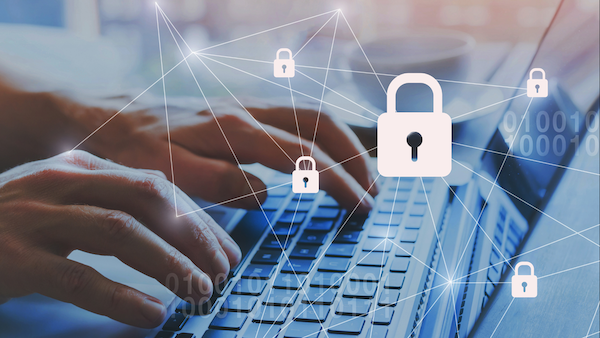The State of Cybersecurity: Changing Requirements for SMEs

For a long time, cybersecurity felt like someone else’s problem – something meant for banks, tech giants and global corporations. But that illusion shattered years ago. Today, small and medium-sized businesses across the UK are just as much in the firing line when it comes to cyberattacks. In fact, they often make more tempting targets.
If you’ve been running a business, you’ve probably already noticed the shift. Maybe you’ve had a suspicious invoice land in your inbox, or a strange request from a client. Maybe you’ve even had to deal with a ransomware scare. You’re not alone. The rules have changed – and it’s costing more to keep your organisation safe.
You’re on the Radar Now
Cyber attackers used to go after the biggest targets they could find, hoping for a multi-million-pound payday. But ask anyone who’s been paying attention and they’ll tell you, that world is long gone. Thanks to automated tools and cheap access to stolen credentials, threat actors now target vulnerable businesses of every size, at scale. Wherever there’s money or data, there’s motive.
Don’t just take our word for it. According to Department for Science, Innovation & Technology, 43% of UK businesses suffered a cyberattack last year, with 67% of medium-sized businesses falling victim to an attack.
For companies without a large IT team, that’s not just unfortunate – it can be critical.
Why Smaller Businesses Are More Exposed
Let’s be honest: protecting your organisation in the current landscape isn’t easy. Most SMEs don’t have dedicated security staff – let alone in-house expertise on emerging threats or best-practice frameworks. It’s common for IT to be handled by a single person balancing priorities, or outsourced entirely to a generalist provider.
That’s not a failing. It’s simply the reality.
The day job still involves meeting client expectations, managing cash flow, aligning teams and chasing growth. Cybersecurity often ends up in the ‘important but not urgent’ bucket, until something forces its hand. Attackers know this. They bank on it.
Often, smaller businesses are seen as a channel into larger ones due to weak supply chain protections. They’re also more likely to rely on consumer-grade antivirus software…or hope that a basic firewall and multi-factor authentication will be enough. But with threat actors getting faster, stealthier and more targeted, those assumptions are no longer correct.
What’s Considered ‘Secure’ Has Changed
It’s no longer just about building a castle wall around your organisation. Firewalls, spam filters and antivirus software are still useful but they’re just the basics. SMEs now need to be thinking in terms of layered protection, visibility and speed.
Here’s why:
- Attacks develop quickly. A ransomware infection can encrypt files across an organisation in under an hour. Delays in detection or response can be extremely costly.
- Entry points have exploded. With hybrid work, cloud adoption and connected apps, users and data now sit across countless devices and services, making old perimeter-based models obsolete.
- Threats are sophisticated. Social engineering, AI-assisted phishing and business email compromises don’t just fool distracted employees, they evade basic defences too.
The bottom line? You can’t rely on yesterday’s protection to deal with today’s threats.
The Illusion of Safety
There’s a dangerous middle ground that many organisations occupy, where protections are just good enough to feel reassuring but not comprehensive enough to be genuinely reliable.
Take, for example, standard email filtering. Most platforms block obvious spam and known phishing domains. But newer, more sophisticated attacks often come from compromised legitimate accounts or use carefully crafted content to slip through unseen.
Similarly, while enabling multi-factor authentication adds a critical layer of defence, many attackers are pivoting to tactics that bypass it entirely – such as token theft or MFA fatigue attacks.
Incidents can still happen even when SMEs ‘do the right things’; it can be deeply frustrating. And it can also lead to fatal underreactions until the real damage has already been done.
You Don’t Need A Security Team, You Need A Security Plan
The good news is that being secure doesn’t mean investing like a FTSE 100 firm. It just means being realistic about the risks – and addressing them with the right mix of tools and expertise. That’s now more accessible than ever, especially with the support of a security-focused provider.
Think of it this way, no one expects SMEs to hire a 24/7 security operations centre. But you do need some form of protection that watches for threats around the clock. No one expects a small company to stay ahead of the latest malware variants. But you do need someone who can detect strange behaviour in your cloud accounts before it turns into theft or disruption.
Working with a provider focused on modern security means sharing the burden. It also means avoiding the trap of scattergun tools and empty assurances. Everything has to work together. That’s when peace of mind becomes reality.
What Smart SMEs Are Putting in Place
Organisations are beginning to understand that effective cybersecurity is more about layers than point solutions. They’re investing in setups that:
- provide visibility into user behaviour and application access
- detect and respond to threats in real time
- enable secure identities across cloud systems
- respond faster when something suspicious happens.
And this is where a solution like the Microsoft 365 E5 Security Add-on starts to come in. It’s an option that builds on Microsoft 365 Business Premium, and includes tools designed to detect, investigate and respond to advanced threats more quickly and comprehensively.
With capabilities like Defender for Office 365, advanced identity protection and attack surface reduction rules, it quietly increases a business’s chances of catching problems early – stopping them fast and minimising impact.
That means fewer assumptions, fewer surprises and fewer late nights wondering if you’re next.
It’s Not About Fear, It’s About Forward Motion
Let’s be clear, this isn’t scaremongering. The reality is that cybersecurity used to be simpler and now it’s not. That affects every business – not just the biggest ones.
Cybercrime is opportunistic. It targets businesses where defences are predictable, where distractions are many and where support is minimal. And for too long, that has described a lot of UK SMEs.
But there’s a flipside to that reality, you don’t have to fix this by yourself. With the right partner, the right approach and the right set of layered tools, staying a step ahead is entirely possible.


